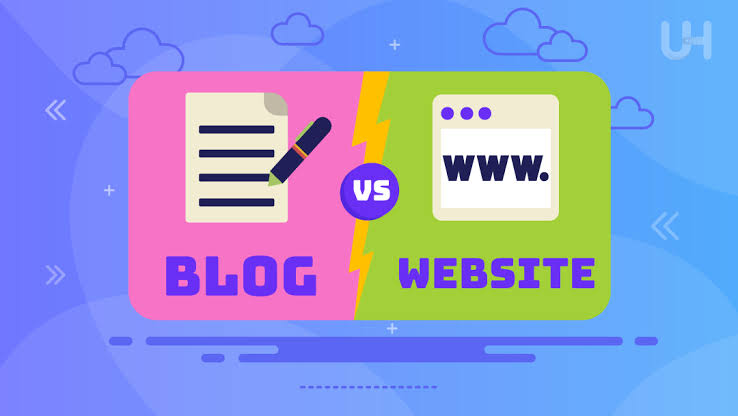
Did you know that as a website owner, you are expected to update your website regularly? In fact, websites that update their content regularly get 55% more traffic?
Currently, your website is most likely the first interaction that will happen between your business and your customer. Therefore, if it’s outdated, visitors will bounce right there, and that will be a lost opportunity. On the other hand, a nicely maintained and regularly updated website not only draws more visitors but also retains them. But how often do you update a website to achieve this?
Understanding the Importance of Regular Updates
But before delving into the question of how often you should update your website, let’s understand the importance of updating your website.
First, regular updating of your website will guarantee relevance, security, and users can easily find what they are looking for in your website. Also, updating your website plays a major role in increasing your web ranking on search engines. This is because very large search engines, more so Google, like sites with constantly updated valuable content. Therefore, updating your website will increase its ranking, thus easily accessible to potential customers.
This is in addition to the fact that technology and design trends are also ephemeral. Something that was working a year ago isn’t as relevant today. Therefore, keeping the website fresh regularly allows you to stay up to date with all these changes and hence keep offering a great user experience.
How Often Should you Update the Content on your Website?

When the updating of your website is concerned, content has to be on top of the list. This includes things from blog posts and articles to product descriptions and service pages. As a general rule of thumb, update your website content at least once a week. This doesn’t mean you have to churn out new content every single time. Very much to the point, it can be just as effective when it features new information, or new keywords.
That’s not all, if you have a blog section, you can continuously update one piece of information per week. This not only keeps your website alive but also provides continuous added value to your target audience. If once a week is too tight, try not to let longer than a month pass without updating your website content. The key word here is consistency. Regular updates show search engines that your website is active and relevant.
How Frequently Should You Update Your Web Design?
Design trends change so fast; what looked modern and professional a couple of years back now looks anything but that. And this impacts the way the visitors perceive your brand. So, how often should you update your website design?
While there is no one-size-fits-all answer, experts generally agree that you should redesign and update your website design every two to three years. This does not necessarily mean an overhaul; it could be minor adjustments to demonstrate relevance to the current design trends. For example, a change in the color palette, typography, or layout will immediately elevate the perception level of your website.
However, if the design on your website is image-centric, considering e-commerce ventures and creative portfolio. Then you might want to refresh the look and feel of these more often. For example, in certain cases, a year is more than enough time to pass between redesigns, as it will keep you ahead of the competition, and your site will stay fresh and modern.
How Often Should You Update Your Website’s Technical Aspects?
Apart from design and content, even the technical parts of your website need to be updated constantly from your end, which concerns speed, security patches, and mobile-friendliness. Now the only question is, how often should you update these technical parts?.
Provided security updates must follow immediately. This is significant in protecting your website from some of the probable risks and thereby keeping your users’ data very safe. Again, the speed and performance levels of your website should be checked quite often. Some websites might be very slow, frustrating the user and consequently resulting in high bounce rates. Tools like Google PageSpeed Insights will help to monitor your website’s performance and point out where some improvements have to be made.
Another important consideration is mobile responsiveness. With the growing number of individuals who visit websites via mobile, you want to ensure that your website appears properly on smaller screens. This, again, will need to be reviewed regularly, especially if you made substantial changes in the design or content of your website.

How Often Should You Update Your Website for SEO?
If there is one big factor that would largely determine good search engine optimization, it would have to be how often you update your website. For as long as you could remember, search engines would always give the go signal to a site with fresh, relevant and up-to-date content. How often do you have to update your website in order to keep it SEO-friendly?
Try to update your website content at least weekly, as previously mentioned. This way, the content you show is fresh and relevant, just what search engines love. Another important factor is the regular updating of your website’s metadata, such as the title tags, meta descriptions, and alt text. This also can help in levitating your rankings in SEO to a great extent.
It is important also to do audits regularly on SEO. Review the performance of the website, check for broken links, and see to it that the keywords are still relevant. Audits on SEO should be held at least once a quarter to always maintain your optimization up on search engines.
Conclusion: Follow a Regular Update Schedule
So, how often should you update your website? This will vary by part, but consistency is key. This can come in the form of weekly content updates, bi-annual design tweaks, or quarterly SEO audits. When you update your website regularly, you will guarantee that it remains relevant and secure. Furthermore, this will bring better chances of highly ranking on search engines, driving more traffic to your site, and eventually hitting your business goals.
Keep in mind that your website is your brand representative. It remains informative and becomes a potential asset if updated continuously to help one keep ahead, whether with quick changes in the digital environment or amidst competition.














